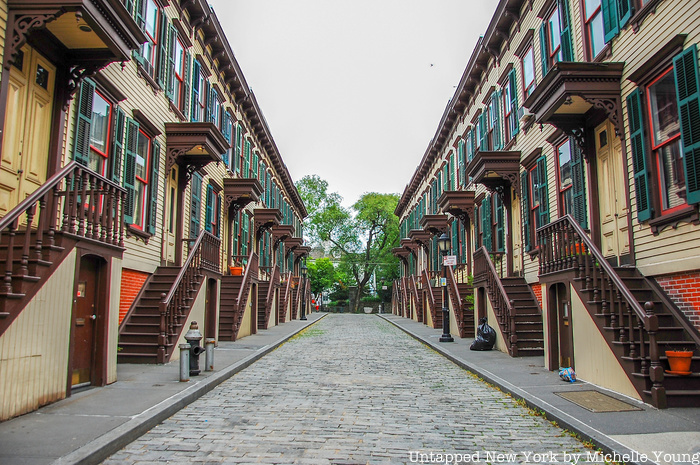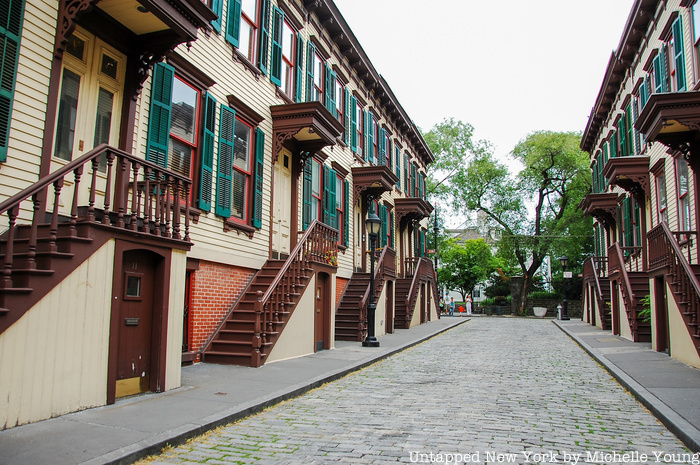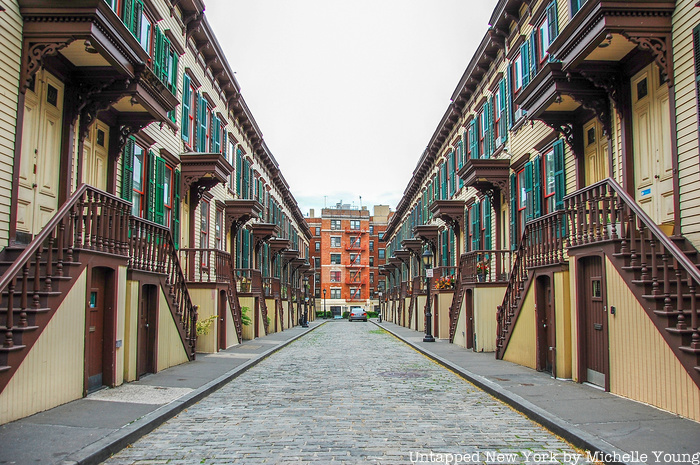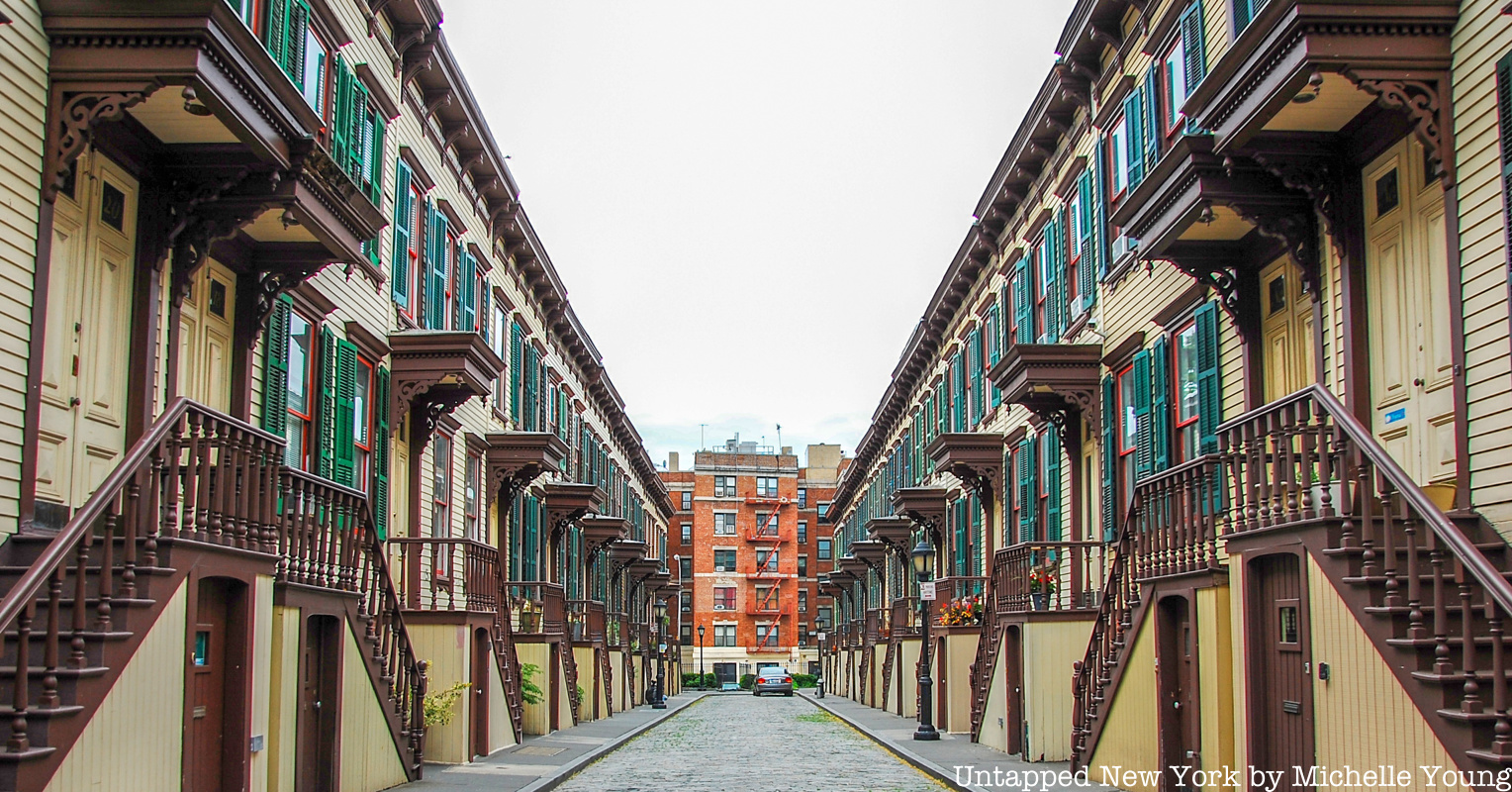A walk down Sylvan Terrace in Manhattan’s Washington Heights neighborhood is a walk back in time. Located right next to the historic Morris-Jumel Mansion, just west of Roger Morris Park, the one-block street is paved with cobblestone and lined on both sides with charmingly restored wooden townhouses built in 1882. The quiet and once-private street is one of the very few remaining places in New York City where you can find wooden homes, especially so many on the same block!
Before the rows of townhouses were built on Sylvan Terrace, the street served as a carriage drive that connected the Morris-Jumel Mansion with Kingsbridge Road, now St. Nicholas Avenue. A view of the mansion, framed by charming yellow houses with ornate brown details, can still be seen when looking eastward. At the opposite end of the street, a small staircase leads down to St. Nicholas Avenue.

The twenty wooden townhouses that line Sylvan Terrace were designed by architect Gilbert Robinson Jr. for developer James E. Ray. Ray’s development was one of the first residential projects in the area. At the time, Washington Heights was mostly farmland, far from the bustling city downtown. The homes were occupied by middle-class residents, not servants of the mansion as is commonly believed. According to the New York Times, a couple of the residents who lived on the street worked as a grocer and a feed dealer. Soon after the construction of the Sylvan Terrace homes, more residential buildings popped up on the surrounding streets and the neighborhood was soon home to brick houses in Queen Anne and Romanesque Revival styles as well as early 20th-century apartment buildings.

Throughout the early 20th century and into the post-World War II era, changing architectural trends and the needs of homeowners led to visual changes on the street. Many original decorative details and doors were lost and the wooden clapboard facades were covered in faux brick, stucco, or aluminum siding. Despite the changes, The Jumel Terrace Historic District, which encompasses Sylvan Terrace, sections of 160th and 162nd Streets, and Jumel Terrace, was designated in 1970. After the designation, a facade restoration project carried out with Federal funds was completed in 1981. The project restored the original uniform look of the street, bringing back decorative cornices, canopies, and wooden shutters based on a 1910 photograph. The quaint charm of the Sylvan Terrace homes makes them a desirable location for film and television shoots. You may have seen it in the first season of Boardwalk Empire.

At the time of the restoration, all but one of the homeowners consented to have their facade restored. For years, No. 16 stood out among its neighbors with a white stucco exterior. Today, all of the homes match, and walking down the street feels like walking onto a movie set, or into 19th-century New York City.
Next, check out 15 of NYC’s one-block streets and 12 of the Last Remaining Wooden Houses in Manhattan






